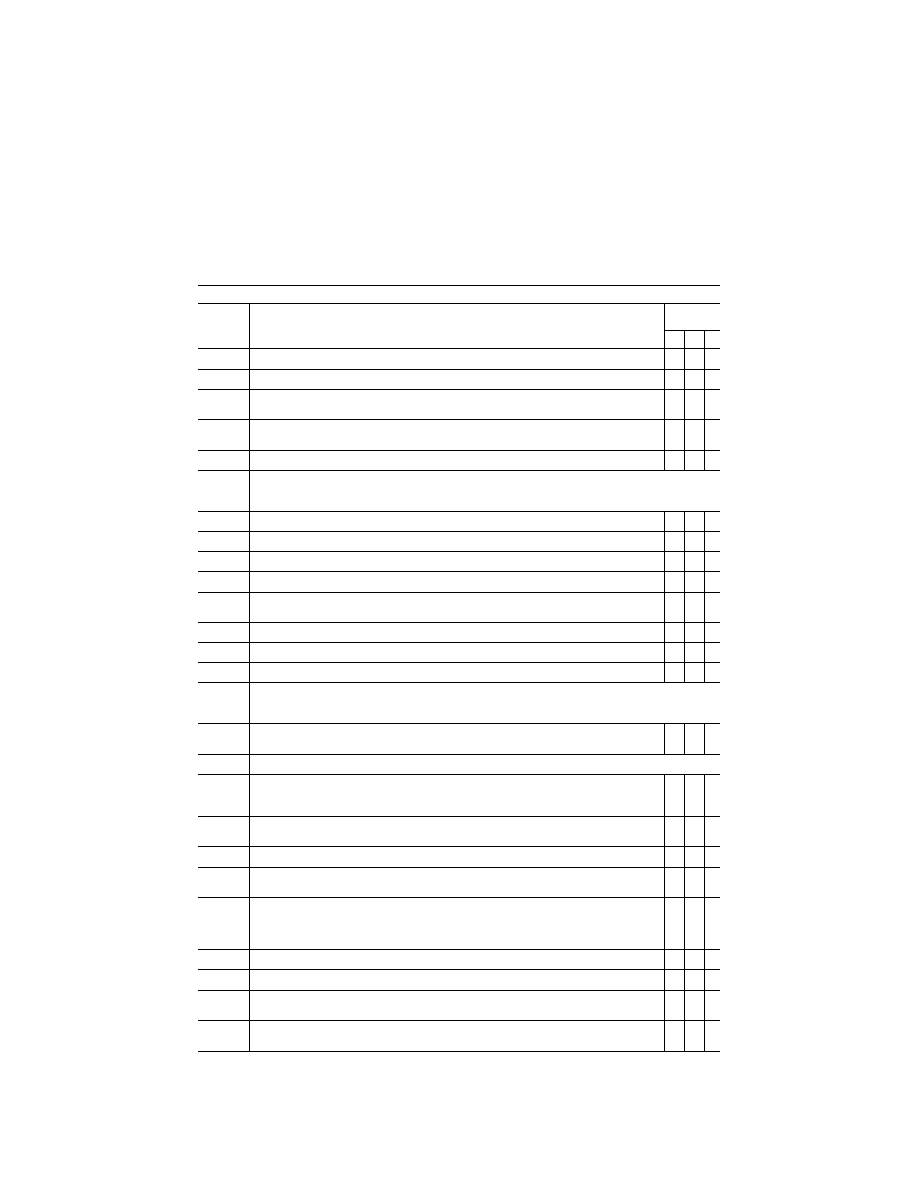
398
14 CFR Ch. I (1–1–19 Edition)
Pt. 60, App. C
T
ABLE
C3B—F
UNCTIONS AND
S
UBJECTIVE
T
ESTS
—Continued
QPS requirements
Entry No.
Visual requirements for qualification at the stated level
class I airport or landing area models
Simulator
level
B C D
6.b. ...........
Visual cues to assess sink rate and depth perception during landings .................................................
X X X
6.c. ...........
Accurate portrayal of environment relating to flight simulator attitudes .................................................
X X X
6.d. ...........
The visual scene must correlate with integrated helicopter systems (e.g., terrain, traffic and weather
avoidance systems and Head-up Guidance System (HGS)).
X X
6.e. ...........
Representative visual effects for each visible, own-ship, helicopter external light(s)—taxi and landing
light lobes (including independent operation, if appropriate).
X X X
6.f. ............
The effect of rain removal devices .........................................................................................................
X X
7.
..............
Scene quality
The following are the minimum scene quality tests that must be conducted for simulators at Level B, Level C, and
Level D.
7.a. ...........
Surfaces and textural cues must be free from apparent and distracting quantization (aliasing) ...........
X
X
7.b. ...........
System capable of portraying full color realistic textural cues ...............................................................
X X
7.c. ...........
The system light points must be free from distracting jitter, smearing or streaking ..............................
X X X
7.d. ...........
Demonstration of occulting through each channel of the system in an operational scene ...................
X
X
X
7.e. ...........
Demonstration of a minimum of ten levels of occulting through each channel of the system in an
operational scene.
X X
7.f. ............
System capable of providing focus effects that simulate rain. ...............................................................
X X
7.g. ...........
System capable of providing focus effects that simulate light point perspective growth .......................
X
X
7.h. ...........
Runway light controls capable of six discrete light steps (0–5) .............................................................
X X X
8.
..............
Environmental effects.
The following are the minimum environmental effects that must be available in simulators at Level B, Level C, and
Level D.
8.a. ...........
The displayed scene corresponding to the appropriate surface contaminants and include appropriate
lighting reflections for wet, partially obscured lights for snow, or alternative effects.
X
8.b. ...........
Special weather representations which include:
8.b.1. ........
The sound, motion and visual effects of light, medium and heavy precipitation near a thunderstorm
on take-off, approach, and landings at and below an altitude of 2,000 ft (600 m) above the sur-
face and within a radius of 10 sm (16 km) from the airport or helicopter landing area.
X
8.b.2. ........
One airport or helicopter landing area with a snow scene to include terrain snow and snow-covered
surfaces.
X
8.c. ...........
In-cloud effects such as variable cloud density, speed cues and ambient changes .............................
X
X
8.d. ...........
The effect of multiple cloud layers representing few, scattered, broken and overcast conditions giv-
ing partial or complete obstruction of the ground scene.
X X
8.e. ...........
Visibility and RVR measured in terms of distance. Visibility/RVR checked at 2,000 ft (600 m) above
the airport or helicopter landing area and at two heights below 2,000 ft with at least 500 ft of sep-
aration between the measurements. The measurements must be taken within a radius of 10 sm
(16 km) from the airport or helicopter landing area.
X X X
8.f. ............
Patchy fog giving the effect of variable RVR ..........................................................................................
X
8.g. ...........
Effects of fog on airport lighting such as halos and defocus .................................................................
X X
8.h. ...........
Effect of own-ship lighting in reduced visibility, such as reflected glare, including landing lights,
strobes, and beacons.
X X
8.i. ............
Wind cues to provide the effect of blowing snow or sand across a dry runway or taxiway selectable
from the instructor station.
X
VerDate Sep<11>2014
16:30 Jun 25, 2019
Jkt 247047
PO 00000
Frm 00408
Fmt 8010
Sfmt 8002
Q:\14\14V2.TXT
PC31
kpayne on VMOFRWIN702 with $$_JOB